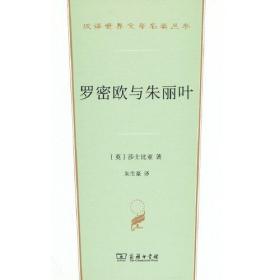
基于流固耦合模型的泥石流运动机理分析(英文版)
¥ 44.8 4.5折 ¥ 100 全新
库存14件
河北保定
认证卖家担保交易快速发货售后保障
作者赵涛 著
出版社科学出版社
出版时间2017-11
版次1
装帧平装
货号9787030526304
上书时间2024-12-19
- 在售商品 暂无
- 平均发货时间 27小时
- 好评率 暂无
- 最新上架
商品详情
- 品相描述:全新
图书标准信息
- 作者 赵涛 著
- 出版社 科学出版社
- 出版时间 2017-11
- 版次 1
- ISBN 9787030526304
- 定价 100.00元
- 装帧 平装
- 开本 16开
- 纸张 胶版纸
- 页数 220页
- 正文语种 英语
- 【内容简介】
-
This book reflects the latest research results iii computer modelling of landslide-induced debris flows. The book establishes an understancling of the initiation and propagation mechanisms oflandslides by means ot'numerical simulations, so that mitigation strategies to reduce the long-term losses from landslide hazards can be devised.
In this context, the book employs the Discrete Element Method (DEM) and Computational Fluid Dynamics(CFD)to investigate the mechanical and hydraulic behaviour of granular materials involved in landslides - an aproach that yields meaningful insights into the flow mechanisms, concerning e.g. the mobilization of sediments, the generation and dissipation of excess pore water pressures, and the evolution of effective stresses. As such, the book provides valuable intormation, useful methods and robust numerical tools that can be successfully applied in the field of debris flow research. - 【目录】
-
1 Introduction to LandsLides
1.1 Background
1.2 Terrestrial Landslides
1.2.1 Classification and Characteristics
1,2.2 Major Research on Terrestrial Landslides
1.3 Submerged Landslides
1.3.1 Classification and Characteristics
1.3.2 Major Research on Submerged Landslides
1.4 Model Testing-Granular Column Collapse
1.5 Numerical Investigations
1.5.1 The Finite Element Method
1.5.2 The Smoothed Particle Hydrodynamics
1.5.3 The Discrete Element Method
1.5.4 The DEM-CFD Coupling Method
2 Introduction to Discrete Element Method
2.1 The Discrete Element Method
2.1.1 Particle Motion
2.1.2 The Particle-Particle Contact Model
2,1.3 The Calculation of Stress in the DEM
2.1.4 Coordination Number
2.2 Model Validation
2.2.1 Input Parameters of the DEM Model
2.2.2 Determination of Numerical Time Step
2.2.3 Numerical Simulation of Triaxial Tests
2.2.4 Material Angle of Repose
2.3 Conclusions
3 Investigation of Dry Granular Flows
3.1 The Granular Column Collapse Model
3.2 Dimensional Analysis
3.3 Numerical Simulations
3.3.1 Deformation of the Granular Assembly
3.3.2 Influence of Initial Column Aspect Ratio
3.3.3 Influence of Model Size Ratio
3.3.4 Influence of Column Characteristic Strain
3.3.5 Infiuence of Material Internal Friction Anglr
3.4 Mechanical Analyses
3.4.1 Evolution of Granular Velocity
3.4.2 Granular Energy
3.4.3 Linear Momentum
3.4.4 Flux of Kinetic Energy
3.4.5 Distribution of Kinetic Energy and Linear Momentum
3.4.6 Evolution of Force Chains
3.4.7 Distribution of Stress
3.4.8 Distribution of Coordination Number
3.4.9 Destination of Surface Grains
3.4.10 Influence of Air Viscous Force
3.5 Conclusions
4 Introduction to the DEM-CFD Coupling Model
4.1 Fluid-Solid Interaction
4.2 Governing Equations of Fluid Flow
4.2.1 Fluid Mass Conservation Law
4.2.2 Fluid Momentum Conservation Law
4.3 The Viscous Shear Stress
4.3.1 Laminar Flow Regime
4.3.2 Turbulent Flow Regime,
4.3.3 Near-Wall Treatment
4.3.4 Initial Conditions
4.4 The MPI Implementation and Data Exchange
4.5 Fluid Flow Through a Porous Soil Sample
4.5.1 Analytical Solution of Soil Permeability
4.5.2 Numerical Model Configuration
4.5.3 Laminar Flow
4.5.4 Turbulent Flow
4.6 Numerical lnvestigation of Granular Sedimentation
4.6.1 The Settling of a Single Particle
4.6.2 Batch Granular Sedimentation
4.7 Conclusions
……
5 Investigation of Submerged Debris Flows
6 Conclusions and Recommendations for Future Work
Appendix A: Summary of the Selected Landslides
Appendix B: Calculation of Porosity
Appendix C: Input Parameters for Simulations
References
点击展开
点击收起
— 没有更多了 —












以下为对购买帮助不大的评价